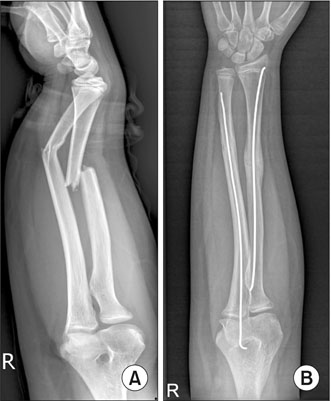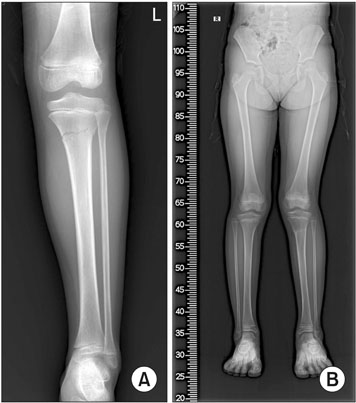J Korean Orthop Assoc.
2018 Apr;53(2):129-135. 10.4055/jkoa.2018.53.2.129.
The Incidence of Pediatric Trampoline Injury: Statistics from a Single Institution
- Affiliations
-
- 1Department of Orthopedic Surgery, Inje University Sanggye Paik Hospital, Seoul, Korea. woonysos@hanmail.net
- KMID: 2410060
- DOI: http://doi.org/10.4055/jkoa.2018.53.2.129
Abstract
- PURPOSE
Recently, there has been increasing number of trampoline injuries at our pediatric orthopedic clinic and emergency room. Therefore, this study is to analyze the prevalence of the trampoline injuries with emergency room surveillance.
MATERIALS AND METHODS
Between September 2015 and February 2017, all patients under the age of 15 years, who visited emergency room of a teaching hospital with trauma and referred to the department of orthopedic surgery, was included; the cause of trauma was analyzed. The severity of injury was also evaluated and compared according to the cause of injury.
RESULTS
There were a total of 1,807 patients under the age of 15 years who visited our emergency room during the study period. There were a total of 71 trampoline injuries (3.9%). There were 28 patients below the age of 5 years, and among them, 14 minor injury were recorded; 43 patients were over the age of 5 years and with 4 minor, 20 moderate, and 19 severe injuries. In the age between 5 and 15 years, the prevalence of mild injury was lower in trampoline injury compared with those of other sports injuries (9.3% vs. 34.0%) and the prevalence of severe injury was higher in trampoline injury (44.2% vs. 26.3%) (p=0.002).
CONCLUSION
Our findings indicate that the incidence of trampoline injury was lower than other country, but it was more severe than injuries from other sports. With increasing incidence of trampoline injuries, parents should be more mindful that trampolines are not safe and stricter supervision may be necessary.
MeSH Terms
Figure
Reference
-
1. Esposito PW, Esposito LM. The reemergence of the trampoline as a recreational activity and competitive sport. Curr Sports Med Rep. 2009; 8:273–277.
Article2. American Academy of Pediatrics Policy Statement. Trampolines. Elk Grove (IL): American Academy of Pediatrics;1977.3. Council on, American Academy, Briskin S, LaBotz M. Trampoline safety in childhood and adolescence. Pediatrics. 2012; 130:774–779.
Article4. Gennarelli TA, Wodzin E. AIS 2005: a contemporary injury scale. Injury. 2006; 37:1083–1091.
Article5. Kasmire KE, Rogers SC, Sturm JJ. Trampoline park and home trampoline injuries. Pediatrics. 2016; 138:e20161236.
Article6. Nysted M, Drogset JO. Trampoline injuries. Br J Sports Med. 2006; 40:984–987.7. Cheung MY, Lai CL, Lam WH, et al. Trampoline-related injuries in Hong Kong. Hong Kong Med J. 2016; 22:81–84.
Article8. Yule MS, Krishna S, Rahiri JL, Hill AG. Trampoline-associated injuries are more common in children in spring. N Z Med J. 2016; 129:37–43.9. Klimek PM, Juen D, Stranzinger E, Wolf R, Slongo T. Trampoline related injuries in children: risk factors and radiographic findings. World J Pediatr. 2013; 9:169–174.
Article10. Black GB, Amadeo R. Orthopedic injuries associated with backyard trampoline use in children. Can J Surg. 2003; 46:199–201.11. Wootton M, Harris D. Trampolining injuries presenting to a children's emergency department. Emerg Med J. 2009; 26:728–731.
Article12. Ashby K, Pointer S, Eager D, Day L. Australian trampoline injury patterns and trends. Aust N Z J Public Health. 2015; 39:491–494.
Article13. Hume PA, Chalmers DJ, Wilson BD. Trampoline injury in New Zealand: emergency care. Br J Sports Med. 1996; 30:327–330.
Article14. Alexander K, Eager D, Scarrott C, Sushinsky G. Effectiveness of pads and enclosures as safety interventions on consumer trampolines. Inj Prev. 2010; 16:185–189.
Article15. Smith GA, Shields BJ. Trampoline-related injuries to children. Arch Pediatr Adolesc Med. 1998; 152:694–699.
Article16. American Academy of Orthopaedic Surgerns (AAOS). Position statement: trampolines and trampoline safety. Rosement (IL): AAOS;2005.17. Eberl R, Schalamon J, Singer G, Huber SS, Spitzer P, Höllwarth ME. Trampoline-related injuries in childhood. Eur J Pediatr. 2009; 168:1171–1174.
Article18. Hurson C, Browne K, Callender O, et al. Pediatric trampoline injuries. J Pediatr Orthop. 2007; 27:729–732.
Article
- Full Text Links
- Actions
-
Cited
- CITED
-
- Close
- Share
- Similar articles
-
- Rapidly growing pediatric trampoline-related injuries in Korea: a 10-year single center retrospective study
- Trampoline-related injuries in Korea
- Pediatric Trampoline-Related Injuries in a Nationwide Registry in South Korea, 2011 to 2016
- Trampoline-related injuries in children: a nationwide cross-sectional study in South Korea
- Surgical Treatment of Maisonneuve Fracture Accompanied by Tillaux-Like Fracture: A Case Report




